Director: Keoni Waxman
Cast: Steven Seagal, Florin Piersic Jr., Jacob Grodnik, Jade Ewen, Jonathan Rosenthal, Radu Andrei Micu, Ovidio Nicolescu, Alexandre Nguyen, Troy Miller
Running Time: 93 min.
By Zach Nix
2016 has been a very busy and interesting year for martial artist and action star Steven Seagal. By the year’s end, he will have appeared within six films overall, whether it be in a leading or supporting role. Films like The Asian Connection, Killing Salazar, and The Perfect Weapon feature Seagal in smaller roles than usual, even including villainous parts for the typically heroic action star, although Seagal has dabbled in anti-hero territory several times before. While those films are fascinating anomalies within his lopsided but commendable career, the vehicles in which Seagal is front and center are always the one’s that bring in the fans and get the most attention. Films like Sniper: Special Ops, Code of Honor, and the newly released End of a Gun feature Seagal as the star and lead of the picture. What’s most humorous is that Seagal looks exactly the same within all six of these films, as different as they all are. His current fashion sense comprises of orange tinted sunglasses, a goatee, and occasionally a do-rag. Regardless of whether Seagal is playing a seasoned sniper, a villainous gangster, or a vigilante, it seems that his goatee phase isn’t going away any time soon.
With that introduction and update of ‘The Sensei’ out of the way, let’s now focus our attention to End of a Gun, Seagal’s latest low budget action vehicle. The film is Seagal’s most recent collaboration with his go-to director, Keoni Waxman, whom he has done six or so films with already, including episodes of the television series True Justice, which in and of itself has been re-edited into films, hence the ‘six or so’ technicality that I specified. However, their latest scored not only the typical VOD release, but a surprising limited release in theaters. That’s right, Seagal was back on the big screen. As someone in their mid-twenties, I have to confess that this was my first time seeing a new Seagal movie in the theater, as I had skipped Machete back in 2010. While Seagal releases more than enough films per year for me to keep up with, I made the effort to see this one and drove several miles to a theater instead of watching it on demand, as both a sign of my support for the genre and in order to experience the rarity of Seagal on the big screen. The film is nothing special, as it’s just about your average recent Seagal venture, but at least it was a fun experience seeing Seagal kick some butt on the silver screen, even if it was within one of his most lackluster ventures to date.
I’ll be honest, I had very little expectations going into this film. After all, I have seen nearly all of Seagal and Waxman’s collaborations, and feel that they all feature the same pros and cons. The pros of their films are that Seagal seems dedicated to the projects, as each one features very little body doubles or voice dubbing. They are also somewhat technically proficient, featuring commendable lighting, decent cinematography, and no horrendous computer graphics. However, they still feature the flaws of Seagal’s worst ventures, such as plots that still find a way to overly complicate beyond the simple premise at hand, poorly edited fights that hide the shortcomings of the performers, and an all-around lack of tension or narrative momentum that drives Seagal’s best features. Therefore, it came as no surprise when End of a Gun met all of these pros and cons beat for beat exactly as I expected it too. I am happy to commend Waxman and Seagal for finally keeping a plot mostly simplistic, but their film still crumbles underneath its non-existent tension, morose plotting, and minimal action sequences.
Seagal plays Michael Decker, a former DEA agent who was fired without pay or benefits, and now resides in France. One night, he sees a man beating up a woman, Lisa (Jade Ewen), and steps in to help out. During the ensuing scuffle, Decker shoots and kills the man. Later the next day, Lisa comes to Decker with a proposition: if he can help her steal her now deceased handler’s money, she’ll split it with him. As a man with little money to his name and deadly skills to boot, Decker accepts. However, it turns out that the money belongs to Mr. Vargas, a drug lord who sends his enforcer, Gage, out to reobtain the money. When Lisa is eventually kidnapped by Gage, Decker has to decide whether to take off with his half of the money or intercede and teach everyone a lesson about honor.
The pros of End of a Gun are minimal, but I’d rather be sincere and honest about the picture than rude and cruel, as Seagal fans don’t exactly come to expect the highest of quality with his newer films. A unique pleasure of Seagal’s latest it that it places him into a heist plot, something that isn’t typically done within his films. The joys of placing Seagal within a heist raises the interesting question of his character’s morality while also offering up the undeniably entertaining elements that come with a heist (i.e. the planning, the execution, the big score, etc). Besides that, there’s some stylish font during the opening credits, as well as some funky music throughout, which is more than you can say about most Seagal films. There are also some seeds for potential, such as a somewhat interesting villain and a double cross that comes later on in the picture. Unfortunately, End of a Gun doesn’t fulfill on its heist-like promises, as Waxman once again delivers a lackluster Seagal outing that focuses more so on needless plotting, turning it into more of a dramatic thriller than a pure genre offering.
End of a Gun feels like an episode of a television show like Leverage, as it offers up a safe and basic heist plot, has an energetic soundtrack, and throws in some laughs here and there. However, imagine if one of those episodes were desperately drawn out to feature length, and you would have End of a Gun. There is barely enough narrative here to fulfill an entire feature, which thereby brings the film to a screeching halt at times, as Waxman drags scenes on for far too long in order to add more to the film’s running time. Another problem with the film is its grossly simplistic heist. Although Decker is sold as an extremely skilled and dangerous character, his plan might just be the lamest in heist history. He simply waits until night fall, walks into a parking garage, cuts two locks, beats up two guys, and simply strolls out with the money. It’s as simple as that. Almost anyone could have done what Decker accomplishes, but alas, that’s where some of the humor comes from in watching a movie like this.
As I stated before, the film is more so a dramatic thriller than a pure action film, as there is very little action throughout the entire feature. Therefore, Seagal fans hoping for plentiful beat downs or shootouts won’t find much. The aforementioned heist, which is rather silly, features some hard to make out fight choreography at a few points, which is no surprise given Seagal’s recent pedigree. There is a rather awesome moment though where Seagal kicks a security officer off of a parking garage in what is a rather impressive display of stunt work. There’s also a notable shootout in a hotel, which sports some solid sound design, but doesn’t last long. The finale of the film, which features gun fire, explosions, and melee fights, is honestly the peak of the film’s excitement. Seagal has a lengthy one on one knife fight with a henchman that makes for just about the highlight of the film. While it would have been nice to get more action like this throughout, action fans will find themselves clinging onto these moments as they are all that they will get during the film’s run time.
Fans of Seagal’s cinema will notice recognizable themes within End of a Gun that are consistent with the rest of his work. The obvious ones are honor and loyalty, as Seagal proudly proclaims towards the end to main villain Gage, “I’m not all about the money, I’m all about the honor.” Although these themes are somewhat apparent during the first two thirds of the film, these philosophical beliefs of Seagal come to the forefront during the finale of the film. He even lectures a character on the matter, and goes so far as to recap the same topic in the final scene, almost as a way to make sure that we, the viewer, don’t forget. Well versed Seagal fans will also recognize the theme of Seagal’s frustration with the system that employs him, as his character was fired from the DEA due to an incident that denied him severance pay. Once again, Seagal plays a character who simply wants to do the right thing and protect others, and yet no matter what, he never gets the proper recognition that he deserves. At this point, the most fun in watching a contemporary Seagal film comes in spotting the interconnected themes of his filmography, no matter how good or bad they are.
Seagal is clearly comfortable working with Waxman. He has now worked with him more than any other director in his career. However, I personally believe that Waxman needs to push Seagal more in order to get more out of him. All of their collaborations, from The Keeper, to A Dangerous Man, to their latest, are fairly safe and bland films. They’re not as horrendously inept as some of Seagal’s absolute craziest DTV efforts, such as Out for a Kill, Attack Force, or Kill Switch, but at least Seagal’s greatest train wrecks are more memorable and entertaining simply for how bonkers they are. Than again, some fans think differently, as several have praised Waxman and Seagal’s collaborations as a return to form for the action star. While it’s clear that Waxman is getting better with every film that he makes with Seagal, as his latest features the most simplistic plot and sleekest action he has produced to date, Waxman’s comfortable efforts aren’t going to get Seagal closer to his glory days any time soon.
All in all, End of a Gun is just another low budget Seagal vehicle that represents the woes of his contemporary work. It’s far from horrendous, as there are few body doubles in sight and Seagal’s voice sounds like himself, but its blandness is insulting enough to make it a forgetful action thriller. Die hard Seagal fans may want to check it out in the theater if only for the thrill of seeing him on the big screen again, but at the end of the day, Seagal has starred in several other DTV efforts of his own that are far better and more memorable than this one.
Zach Nix’s Rating: 2/10

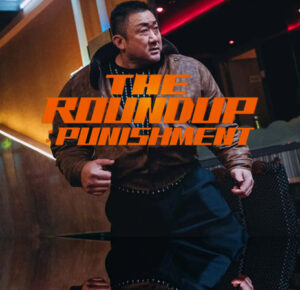
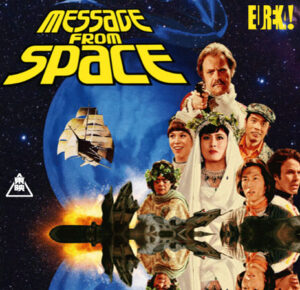
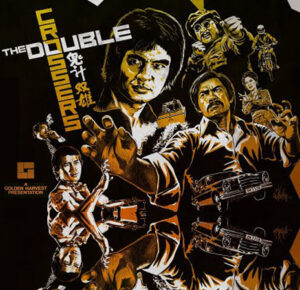
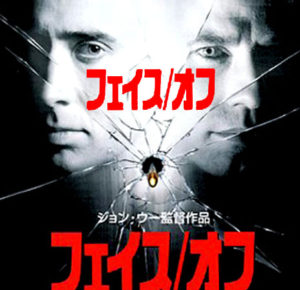
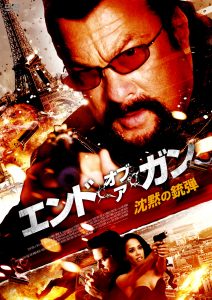
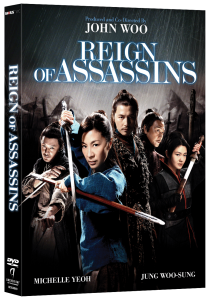
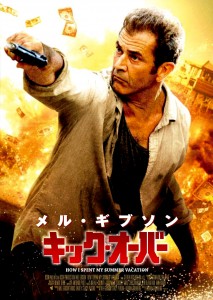
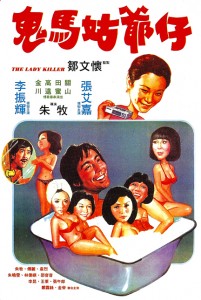
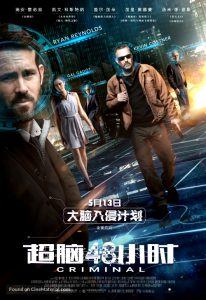
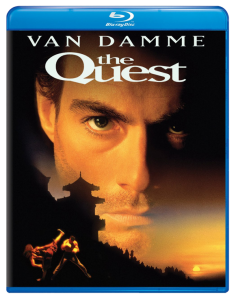
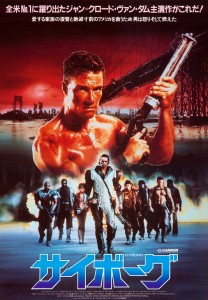


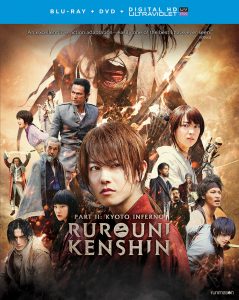
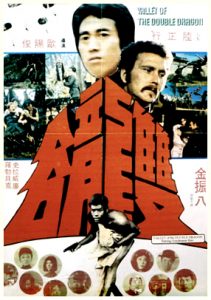

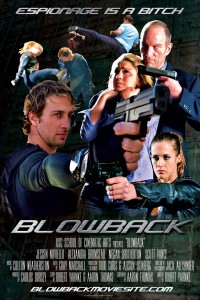
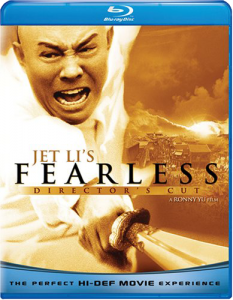



9 Comments